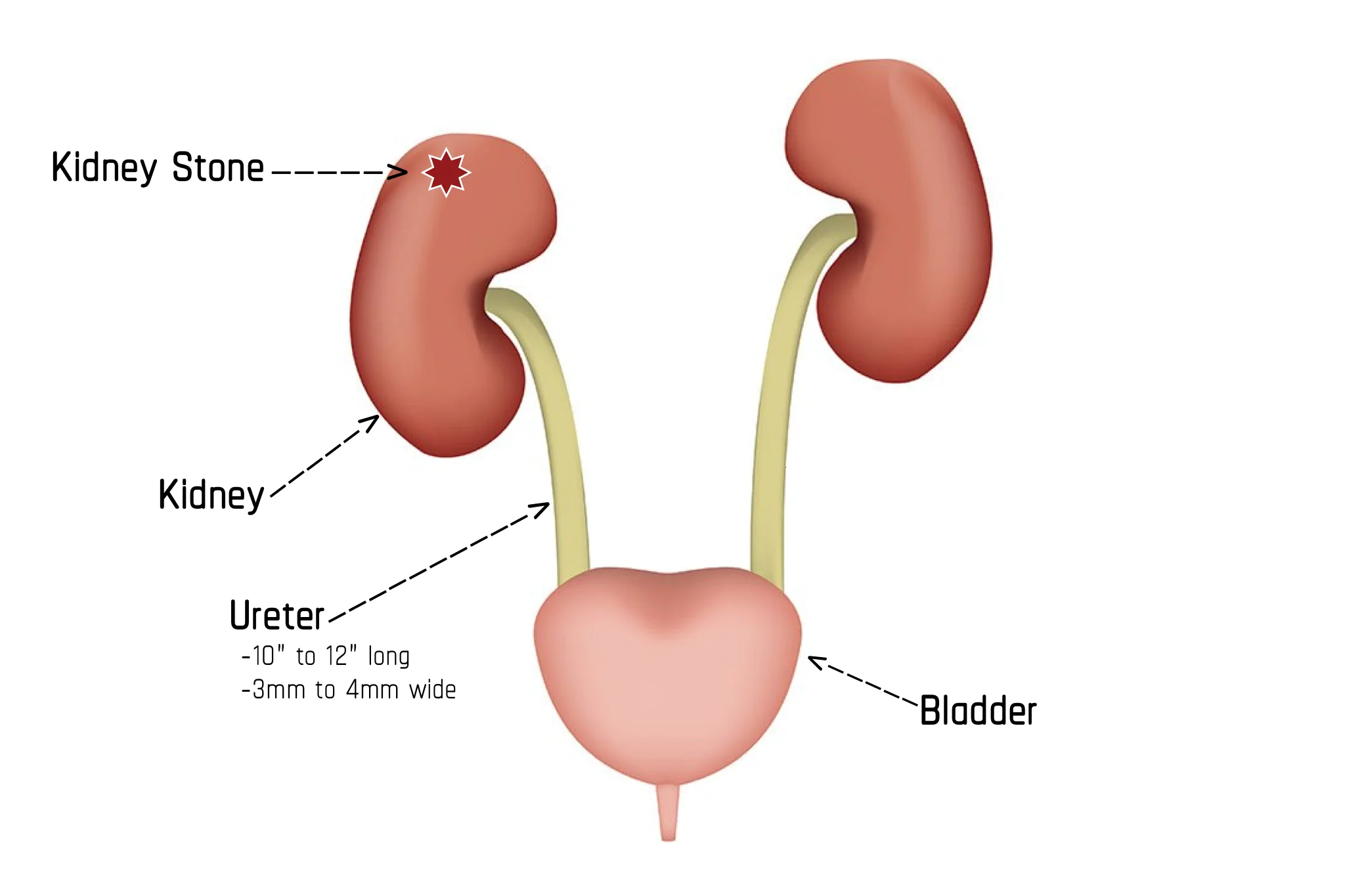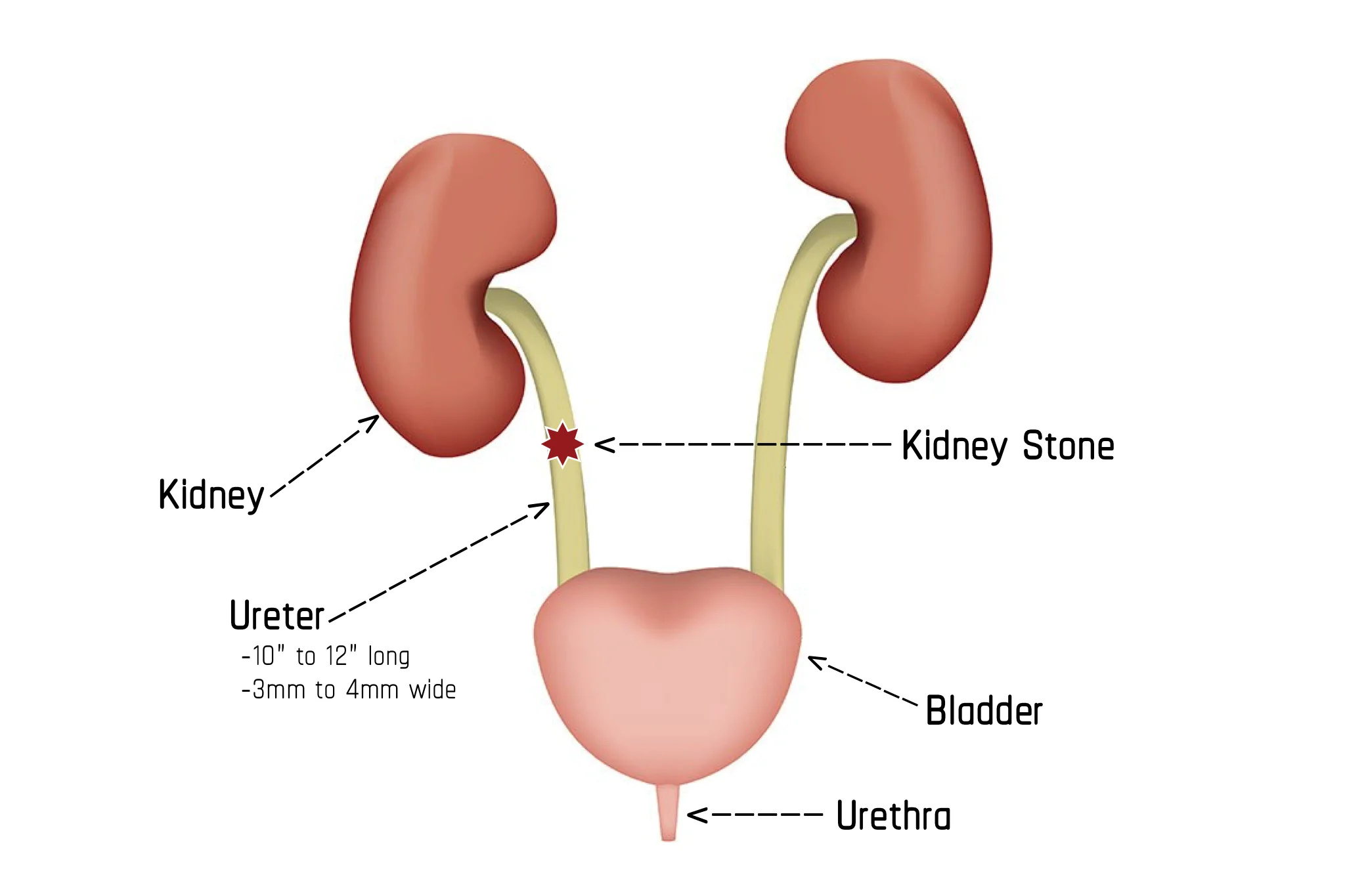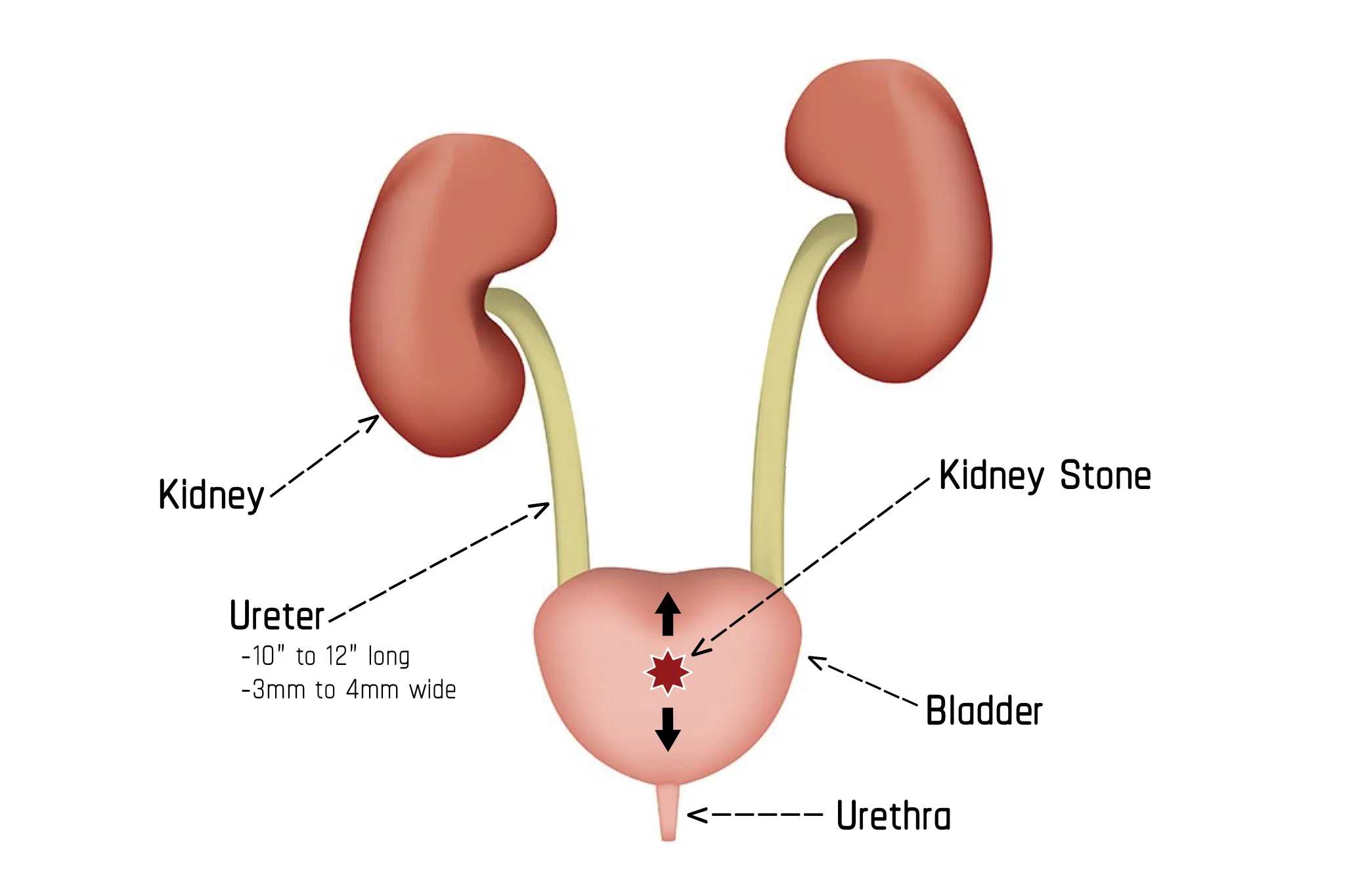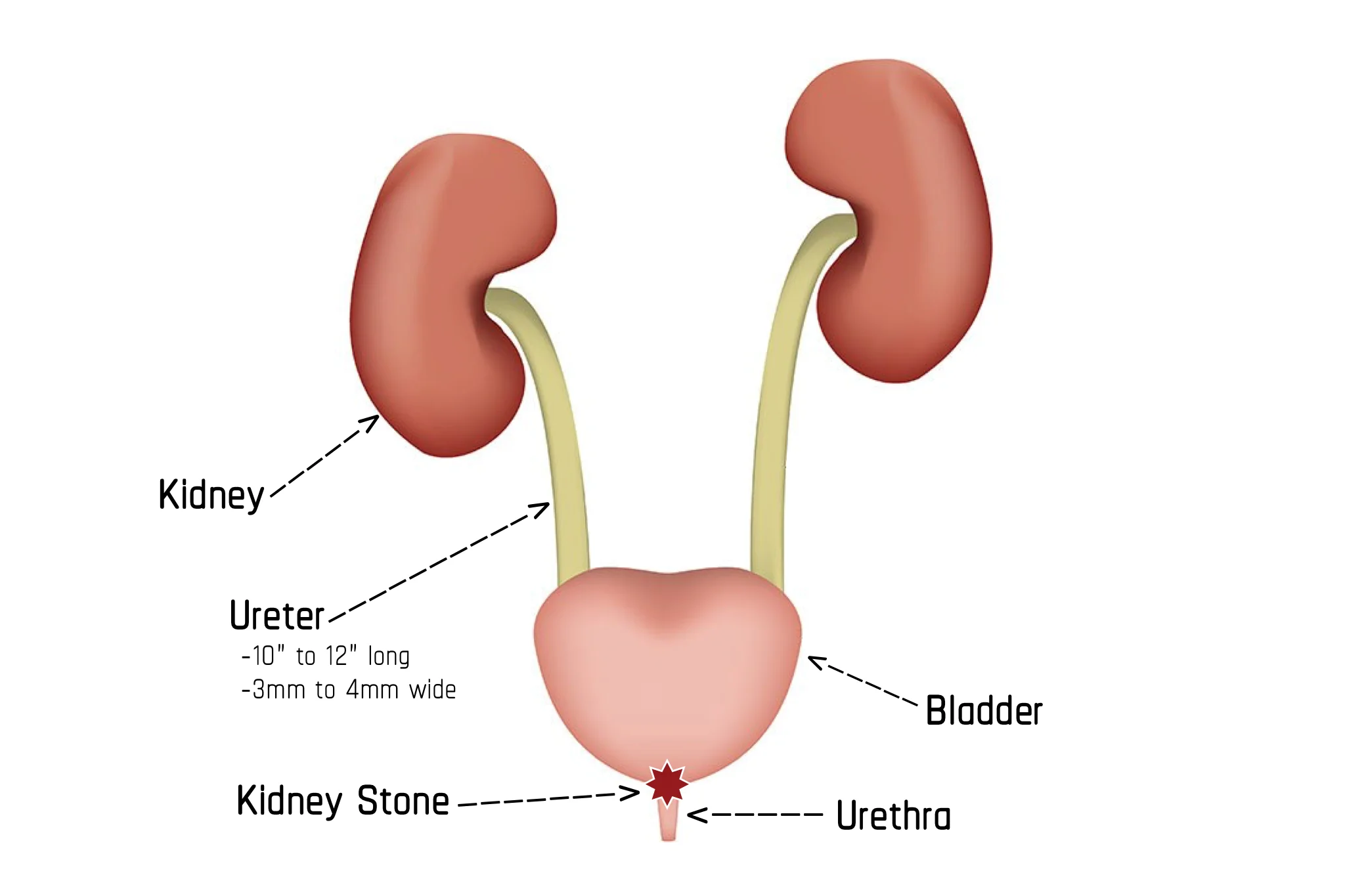Published: October 20, 2019 | 6 mins read
4 Stages to Passing Kidney Stones
The goal of this blog is to provide insight into the process of passing a kidney stone. In particular, we will address what you should expect at each of the four stages along the way. For the newbies, kidney stones can be one of the most frightening experiences of a person’s life. The pain starts almost immediately out of nowhere and typically generates significant panic for the person experiencing the pain. The pain is so great that it commonly elicits a ride in an ambulance or a middle of the night emergency trip to the ER. Either way, not a ton of fun.
To make matters worse, Hospital staff don’t always know what’s happening to you and provide very little useful advice. Even after they have identified that it’s a kidney stone, very little is communicated. And trust me, this comes from first-hand experience over multiple kidney stones. It is nothing short of shocking to learn about the lack of education for a condition that impacts over 1 in 10 Americans.
So, let’s dive in.
STAGE ONE

Most people first become aware that there is an issue when the kidney stone begins the process of detaching from the inner wall of your kidneys where it has been forming. The actual growth process of the stone is painless, and most people do not know that it’s occurring. The only exception to this is if the stone creates a blockage of some sort that starts to impact kidney function, which would exhibit other symptoms. However, this is rare.
Once the stone starts to detach from the interior of the kidney, the body recognizes a foreign object and begins the process of trying to remove it. This process results in waves of agonizing pain as the kidney spasms to try and shake loose the offending object.
*NOTE: for me, this pain feels like the worst pulled muscle OR if you pulled your back severely.
Spasm frequency will differ for everyone. But, count on one probably 1-4+ times an hour until your kidney has shaken itself free from the kidney stone.
These spasms are often debilitating. Like, take your breath away intense. No matter how tough you are or resilient to pain, it has the potential to bring you to your knees. Pregnant women often comment that the pain of kidney stones is worse than giving birth naturally. Now that is crazy!
Nevertheless, one ray of sunshine in all of this is that the pain found in Stage One is, in most instances, the worst of the entire process of passing a kidney stone.
STAGE TWO

Once the kidney stone leaves the physical kidney itself, it will now be traveling down the path of your ureter. Ureters are the tubules that carry urine from the kidneys down to the bladder (see Figure A). The trouble is, the average human ureter is roughly 3-4mm in exterior diameter (interior diameter is about 2-3mm) and about 10-12 inches long. Kidney stones can range in size considerably. But, anything over 2mm, you’re going to feel.
Now, the pain is not nearly as bad as when the kidney stone detaches from the kidney. But let’s be clear. There is still a lot of pain. However, the pain only comes when the stone is moving. And, the pain is different in sensation. In Stage One, the pain is INTENSE and feels like nuclear bombs going off. Pain in Stage Two is more of a radiating sensation, which makes sense because the stone is ripping and tearing as it makes its way down to your bladder.
You may also feel a sensation of pressure occurring near where the kidney stone might have stopped at this stage. It’s not entirely uncomfortable. But, you know something is there.
PASS YOUR KIDNEY STONE FASTER WITH LESS PAIN
STAGE THREE

Once in your bladder, things change pretty dramatically when it comes to pain. The pain is pretty much gone. But, what you are going to feel is IMMENSE PRESSURE. And, your body is going to make you feel like you have to pee every 5 minutes. But, this makes sense, the body is pretty smart, and it knows that there is a foreign object somewhere in your urinary tract, and it wants it gone.
What you’re about to experience is a bit like playing with one of those Yomega Brain yo-yos that will sit and spin at the end of your throw and then snap back up after a few seconds (does anyone else remember those things??). What I mean is this: Inevitably, you will respond to your body’s signal to urinate, and the stone is going to get stuck in the entrance to your urethra as you try to pass it (your urethra is the channel from the bladder to the outside world).
NOTE: This game is going to be VERY disconcerting for any first-time kidney stone sufferers out there. Once that stone gets stuck, and the urine flow goes away, panic sets in all over again. You will say to yourself, “Shoot, now it’s stuck. Do I have to go to the Emergency Room again?!? UGH!”
However, rest assured. Give it 5-10 minutes, and the kidney stone will return to the bladder, and you will start the process all over again. However, after reading or watching this, you will be able to out-smart that kidney stone ????
STAGE FOUR

This last stage is going to feel a bit counter-intuitive to some of you out there. But, it is super important to follow the advice.
Once you feel the kidney stone lodge itself in the opening to your urethra, you have to PUSH. And, push hard. Keep pushing until you hear the stone plink on the bowl of your toilet or thwack into your plastic strainer.
If you would like to learn more about the four things that you can do to make this process a ton easier, please read our free guide on the “4 simple steps to pass your kidney stone“. This content will help you prepare yourself for success and skip a lot of the agony that is associated with passing a kidney stone.




I did the steps in August of 2020. It works! It might sound gross, but I decided not to sit on the toilet, but take a hot bath with Epson salt. The magnesium in the water helped my muscles relax, and pushing was much easier. I did not realize I passed the stone, but I found it in the water.
That’s awesome! Glad those steps did the trick for you!